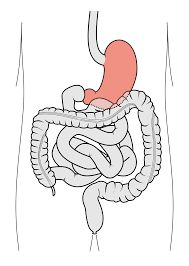HIV
- Kaushik Annamraju

- May 31, 2022
- 2 min read
HIV is an illness that affects roughly 38 million people around the world with the vast majority of them being adults. Nearly 700,000 people will die from HIV this year. It is estimated that there will be 2 million more people infected with HIV in the next 8 years. It is a widespread disease that is considered an epidemic and one of the most dangerous diseases to ever be observed. In this article, the details of the disease known as HIV as well as it’s history and treatment options will be covered.

What is HIV?
HIV is an incurable sexually transmitted disease that attacks the body’s immune system. This works because HIV infects important cells in the human immune system such as T cells, macrophages, etc. The infected T cells are then killed in a variety of ways which leads to a weaker immune system. When the number of T cells declines past a certain point, the body becomes very susceptible to illnesses which leads to Acquired Immune Deficiency Syndrome. HIV can be spread through any bodily fluids and non-sexual transmission can occur during pregnancy from mother to child.
What is the history of HIV?
HIV is known to come from non-human primates usually found in Western Africa. HIV-1, one of the types of HIV, was found in wild chimpanzees. It resembles a similar disease in chimpanzees known as SIV which is an endemic for chimpanzees. SIV is transmissible to humans but it is easily suppressed within a few weeks. It is thought that after hundreds of rapid transmissions, SIV was able to mutate into HIV. The earliest case of HIV was in 1959 in the Belgian Congo and the virus is also thought to have been present in America during the 1960s. It is also plausible that HIV arose due to unsafe vaccination procedures that took place during this time.
How is HIV Treated?
HIV is treated using multiple antiretroviral drugs which are drugs specifically used to stop the development of viruses. The drugs are first administered through pills which are used daily for a month. These drugs are used as a base so that the treatment can then switch to monthly shots which are then reduced to shots every other month. Antiretroviral drugs are used to lower the amount of HIV in the blood. This leads to a lower viral load. A viral load is the amount of the virus the doctors find in the body of a patient. If the viral load is so low that the HIV is undetectable, then it is nearly impossible for the HIV to be transmitted through sex. Skipping HIV treatment can lead to a mutation in the virus or an exponential increase in the viral load. Due to these treatments, HIV is now more a chronic condition with it rarely progressing to AIDS.
Conclusion
In Conclusion, HIV is an epidemic that plagues over half a million people. However, the world made a pact to eradicate HIV before 2030, saving hundreds of thousands of lives and millions of potential infections. The spread of HIV has declined rapidly over the course of the decade and it is speculated to decline even further. This could lead to HIV becoming extinct or becoming something into a manageable chronic condition with AIDS being completely eradicated.



Comments